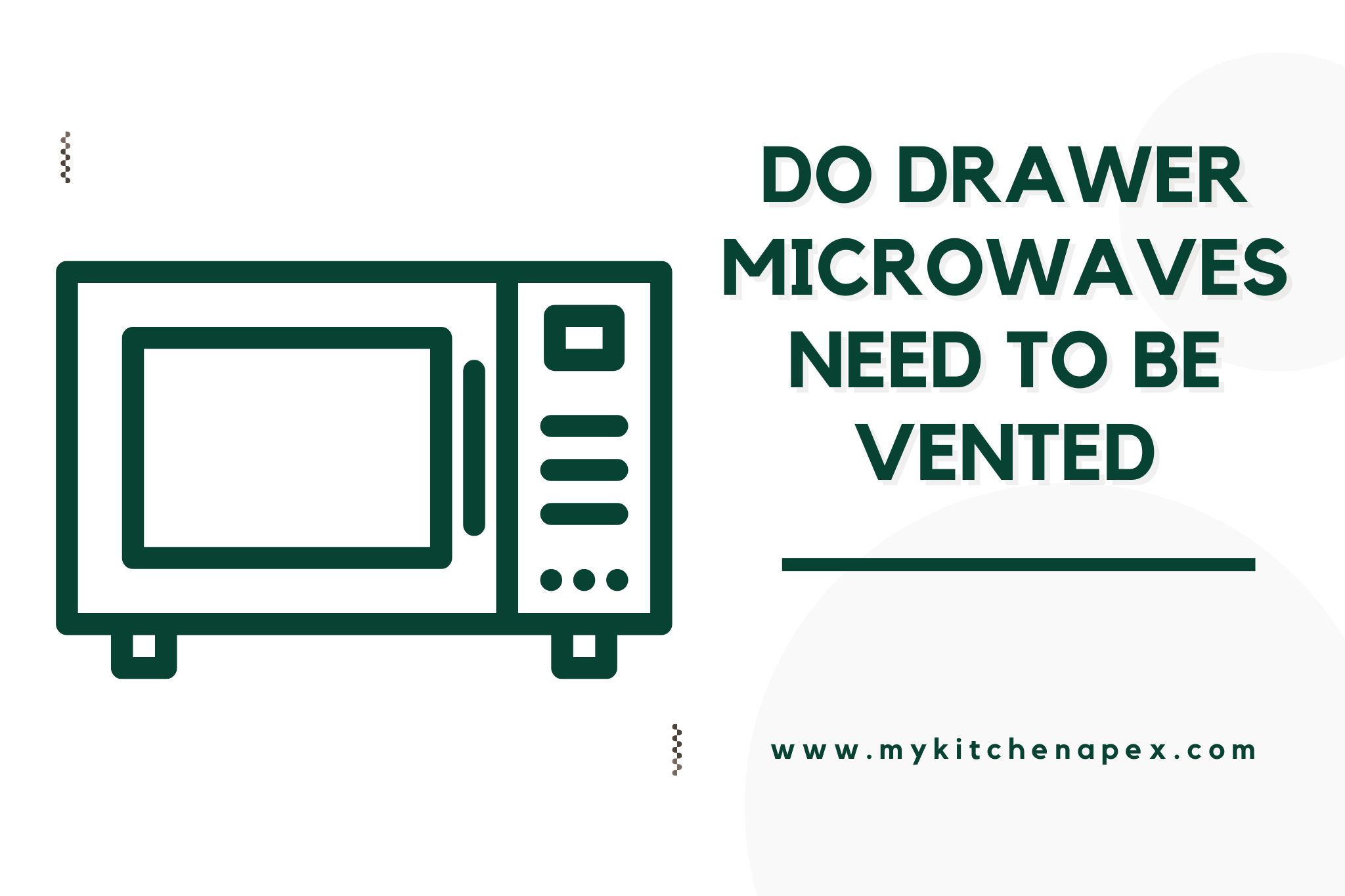Originally Created on: January 22, 2024 @ 8:55 am
Are you considering installing a drawer microwave in your kitchen but unsure if it needs to be vented? You’re not alone. Many homeowners are drawn to the sleek design and space-saving benefits of these innovative appliances, but ventilation requirements can be a bit confusing. In this blog post, we’ll dive into the world of drawer microwaves and explore whether or not they need to be vented, providing you with all the information you need to make an informed decision for your kitchen.
When it comes to kitchen appliances, functionality is key. And while drawer microwaves offer convenience and style, understanding their ventilation needs is crucial for optimal performance. So let’s take a closer look at why proper ventilation matters when it comes to drawer microwaves and how it can impact your cooking experience.
Table of Content
Highlights:
- Drawer microwaves do not necessarily need to be vented, but proper ventilation is recommended for optimal performance and safety.
- Venting helps dissipate heat, remove steam and odors, and prevent damage to the microwave.
- Consult the product manual or seek professional advice for installation guidelines specific to your drawer microwave model.
do drawer microwaves need to be vented
Drawer microwaves do not necessarily need to be vented, as they are designed to be installed in a cabinet or under the counter. However, it is recommended to have proper ventilation for optimal performance and safety. Ventilation helps dissipate heat generated by the microwave, preventing overheating and potential damage. It also helps remove any steam or odors that may accumulate during cooking.
While some drawer microwaves come with built-in ventilation systems, others may require additional venting through an external exhaust system. This will depend on the specific model and installation requirements outlined by the manufacturer. It is important to consult the product manual or seek professional advice when installing a drawer microwave to ensure proper ventilation.
Proper ventilation not only enhances the longevity of your drawer microwave but also contributes to a healthier kitchen environment by reducing moisture buildup and eliminating cooking odors. So, while venting may not be mandatory for all drawer microwaves, it is highly recommended for optimal performance and safety reasons.
You May Also Like: can you put a drawer microwave under a cooktop
Are drawer microwaves vented?
Drawer microwaves are a popular choice for homeowners looking to save counter space and achieve a sleek, modern look in their kitchens. One common question that arises is whether drawer microwaves are vented. The answer is yes, most drawer microwaves come with built-in ventilation systems to ensure proper airflow and prevent overheating.
These ventilation systems typically include vents located on the front or sides of the microwave drawer, allowing hot air to escape while keeping the surrounding area cool. Some models may also have additional exhaust fans or filters to further enhance the ventilation process. It’s important to note that proper installation is crucial for effective venting, so it’s recommended to consult the manufacturer’s guidelines or hire a professional for installation.
In conclusion, drawer microwaves do come with ventilation systems to maintain optimal performance and prevent any potential safety hazards. Homeowners can enjoy the convenience of a microwave in their kitchen without sacrificing valuable counter space or compromising on style.
Benefits of venting a drawer microwave
Venting a drawer microwave offers several benefits that make it a worthwhile investment for any kitchen. Firstly, venting helps to remove steam, smoke, and odors from the microwave’s cooking process, ensuring your kitchen stays fresh and clean. This is especially important when cooking strong-smelling foods like fish or curry.
Exclusive Microwave Picks
🔥 Our Top Microwave Picks! 🔥
Secondly, venting also helps to prevent the buildup of condensation inside the microwave. Without proper ventilation, moisture can accumulate on the walls and ceiling of the microwave, leading to potential damage over time. By venting the microwave, you can extend its lifespan and ensure it continues to function optimally.
Lastly, venting a drawer microwave can also improve overall air quality in your kitchen by reducing humidity levels. Excess humidity can lead to mold growth and other issues that affect both your health and the condition of your kitchen. With proper ventilation in place, you can create a healthier environment while enjoying all the convenience that a drawer microwave has to offer.
In conclusion, venting a drawer microwave provides multiple benefits including odor removal, prevention of condensation buildup, and improved air quality in your kitchen. By investing in this feature-rich appliance with effective ventilation capabilities, you can enhance both your cooking experience and the longevity of your microwave.
Also Read: can you put a microwave drawer under a wall oven
Is it safe to use an unvented microwave?
Using an unvented microwave can be unsafe due to the potential build-up of steam and heat. When a microwave is vented, it allows the release of steam and hot air, preventing pressure from building up inside. Without proper ventilation, there is a risk of explosion or damage to the appliance.
Additionally, using an unvented microwave can lead to poor cooking results. The trapped moisture can affect the texture and taste of food, resulting in unevenly cooked meals. It’s important to follow manufacturer guidelines and ensure that your microwave is properly vented for optimal performance and safety.
In conclusion, it is not recommended to use an unvented microwave as it poses safety risks and may impact cooking outcomes. Always prioritize your safety by following proper ventilation guidelines provided by the manufacturer.
Do all microwaves need to be vented?
Not all microwaves need to be vented. While some microwaves come with built-in ventilation systems, others do not require venting at all. The need for ventilation depends on the type of microwave and its installation location. Over-the-range microwaves, for example, typically have built-in exhaust fans that help remove steam, smoke, and odors from the cooking area. These types of microwaves usually require proper venting to ensure efficient operation and prevent damage to the unit. On the other hand, countertop or built-in microwaves may not necessarily need a dedicated ventilation system as they are designed to dissipate heat through natural convection or internal cooling mechanisms.
It’s important to consult the manufacturer’s guidelines or seek professional advice when determining whether your specific microwave needs venting. Factors such as kitchen layout, proximity to windows or doors, and local building codes can also influence the need for proper ventilation. By understanding your microwave’s requirements and considering your kitchen setup, you can ensure safe and effective operation while enjoying convenient cooking options without compromising air quality in your home.
Also Read: are toaster strudels healthy
Final Thoughts
In conclusion, while not all drawer microwaves require venting, it is highly recommended for optimal performance and safety reasons. Proper ventilation helps dissipate heat, remove steam and odors, and prevent potential damage or hazards. Consult the manufacturer’s guidelines or seek professional advice to determine if your specific model requires additional venting. By ensuring proper ventilation, you can enjoy the convenience of a drawer microwave without compromising on functionality or air quality in your kitchen.

